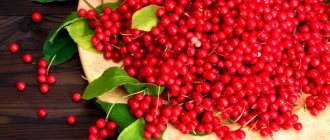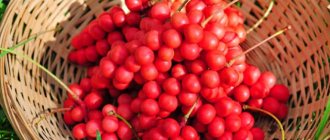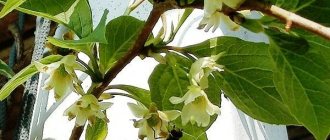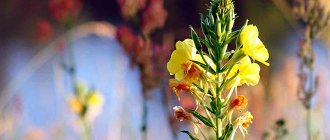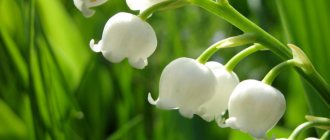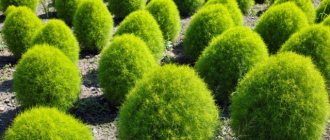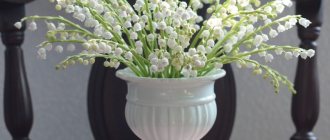Chinese lemongrass is a plant of vital energy and strength, its beneficial properties and contraindications will be discussed in the article. We will also understand the features and rules for collecting and preparing Far Eastern lemongrass raw materials. There are hundreds of thousands of unique species of medicinal plants in nature that can be used to maintain a healthy, fulfilling life. So we learn about “wu wei zi”, as they say in China, or, for us, more commonly, about lemongrass.
This is a completely unique plant, not only because of its ability to perfectly and quickly restore the body. The fact is that the fruits of this tree vine combine 5 tastes: the skin has sour notes, the pulp is inherently sweet, the seeds have bitter and astringent tones, and in general the berry is salty. It is for this feature that it was given the name “wu wei zi”, which translated means “berry of 5 tastes”. In Ancient China, the plant had magical status.
Knowledgeable people connected lemongrass with the main elements of the Earth: water, fire, earth, air and metal. Its use added vitality to a person and brought harmony to the energy structure of subtle bodies.
Traditionally, Far Eastern Schisandra is used to normalize the functioning of the liver and kidneys, and to accelerate the removal of toxins from the blood. The plant extract increases the level of fertility, normalizes the functioning of the central nervous system, removes excess fluid, and restores the body’s strength after suffering serious illnesses.
What is Chinese lemongrass
The woody liana belongs to the genus Schisandra, united in the family. Schisandraceae (Schisandraceae). In Latin, the name of the plant is Schisándra chinénsis. But usually it is called Far Eastern, Chinese or Manchurian lemongrass.
In the East, from 14 to 25 species of this plant grow, but at the head of this “kingdom-state” is our Chinese lemongrass. Another species that is actively cultivated is red-flowered lemongrass. It decorates winter gardens. Crimean lemongrass, which grows in Crimea, is also interesting. But it is a small herbaceous shrub whose leaves have a lemon aroma.
There are also other varieties of Far Eastern tree-like vines from the family. Schisandra. But the number of varieties of oriental plants is quite limited. Breeders have developed varieties of Schisandra chinensis Pervenets, Volgar, Debut, Myth and Sadovyi-1, which take root in the conditions of the middle zone. All of them “were born” and officially recognized relatively recently - since 2000.
Japanese lemongrass is often confused with Japanese quince or chaenomeles. These are different plants from different families with their own advantages and beneficial properties. The characteristics and purposes of their cultivation are radically different.
What does lemongrass look like and where does it grow?
In its native climate, Far Eastern Schisandra looks like a deciduous climbing vine up to 10-15 m; in cultivation it rarely grows up to 4 m. Schisandra is a liana that is distinguished by the following features:
- a thick, rough trunk and branches of lemongrass that wrap around the support;
- obovate, fleshy leaves, which are narrowed at the base and have a pointed apex;
- on a monoecious plant there are dioecious flowers with a diameter of up to 1.5 cm, white in color, at the end of flowering they acquire a pink tint;
- on the growing receptacle a racemose, clustered polyberry (succulent multileaf) is formed;
- The seeds resemble a bud, consisting of a hard shell and a dense core. The smooth and shiny surface is painted yellow.
The flowering period occurs at the end of May - beginning of June, and the useful berries on the lemongrass vine ripen in September - October.
The leaves and stems of the Far Eastern plant are aromatic: they smell like lemon. All parts are distinguished by a spicy taste, by which Chinese lemongrass can be easily distinguished from actinidia or wood pliers.
Favorite places where lemongrass grows are East Asia: China, Japan and Korea. In Russia it grows in the Far East, so its second name is Far Eastern Schisandra. On Sakhalin Island, in the Amur region, on the Kuril Islands, in the area of the coast of the Tatar Strait, you can find dense thickets of tree-like vines.
Schisandra is a rare phenomenon in Siberia. It is usually cultivated in central Russia, where it exhibits its original beneficial properties to a greater extent. This is an ornamental, medicinal plant and an excellent honey plant. More often used for decorative purposes: the vine entwines arches, pergolas, gazebos, and creates a hedge.
The appearance with beautiful flowers and then berries complements the property of giving a bright lemon aroma. Red Chinese berries stick well to lemongrass and are preserved when covered with snow. The large vine resembles a fruit tree with fragrant fruits.
The benefits of stems, seeds and leaves of the Chinese miracle vine
It is worth noting that not only berries are useful. Leaves, stems and seeds are used.
- Schisandra fruits are a storehouse of mineral salts, vitamins E and C. 1/5 of the berries consist of citric, malic and tartaric acids. The list of microelements contained in the berry is also impressive: iron, zinc, phosphorus, calcium, copper, nickel, sulfur, titanium, manganese, silver, molybdenum, potassium. The fruits of the plant contain a great variety of tonic substances. This has a tonic and stimulating effect on the entire central nervous system of the body, as well as on the functioning of the respiratory and cardiovascular systems.
- The seeds contain schisandrol and schisandril. Also present are tannins and resins, fatty oils, catechins, and anthocyanins. Herbalists often use the seeds to treat and prevent respiratory diseases such as influenza, bronchitis, and asthma. And also for such a serious illness as tuberculosis. Consumption of lemongrass seeds is also effective for diseases of the gastrointestinal tract, liver and kidneys.
- The leaf blade contains a large amount of essential oils. Infusions using leaves and bark are very helpful in getting rid of scurvy, caries, and are also effective against childhood dysentery.
Chemical composition
The Chinese prepared tonic and refreshing drinks based on Chinese liana. Even 250 years ago, its beneficial properties were known. In our country, the benefits of Chinese lemongrass were discovered much later: the Far Eastern berries were ignored for a long time. Today, the composition and properties of the vine have been fully studied, and beneficial substances have been found not only in the berries, but also in all its parts.
Table: “Chemical composition and beneficial properties of Schisandra chinensis”
| substance | positive effect on the body |
| Flavonoids and organic acids | They have an anti-inflammatory effect and belong to the group of antioxidants |
| Essential oils | Able to relieve inflammation and restore tissue; have a local anesthetic effect |
| "Askrbinka" and tocopherol (E) | Stimulate the functioning of the immune system, strengthen the walls of blood vessels, restore tissue, affect the growth of bone tissue |
| Fatty oils (in seeds) and tannins | Relieve inflammation, heal wounds, improving the condition of the epidermis; have an astringent effect |
| Lignans (schisandryl and schisandrol) | They have a tonic effect on the body due to the excitability of the central nervous system, accelerating metabolic processes |
| Anthocyanins (plant pigments or glycosides) | They have antioxidant activity, reduce the risk of cancer, and have a pronounced antibacterial effect |
| Microelements | Participate in various metabolic processes. |
| Simple sugars | Are a source of energy |
In Chinese lemongrass, the benefits are associated with the presence of lignans in the composition. Thanks to their tonic and beneficial properties, lemongrass is classified as an adaptogen plant that can:
- increase adaptation to new difficult conditions;
- strengthen the heart and blood vessels;
- influence physical and mental endurance;
- enhance memory, attention, concentration on a specific action;
- neutralize the effects of climate change on the body;
- withstand heavy loads.
In terms of its effects, Far Eastern Schisandra is compared with aralia, ginseng, eleutherococcus, and Brazil cola nut.
In the Far East, hunters always kept a supply of dried lemongrass berries in their backpacks. A long stay in the forest and hunger were not scary for them: a handful of berries with useful, stimulating properties allowed them to hunt for animals all day. At the same time, the hunter did not feel hungry.
Trimming
Chinese lemongrass is pruned after two years. Up to 6 shoots are left in the bush, the rest are cut to the ground. After 16–18 years, the yield of the branch decreases, and it is also removed. The bushes are cleared in November. But such work is also carried out in June, if the vine is very overgrown.
Attention! Branches should not be trimmed in winter or late spring. This leads to the release of juice and the death of the plant.
Root shoots are removed every spring by cutting below the soil surface.
Schisandra chinensis pruning scheme
Calorie content of Schisandra chinensis
85% of the water is contained in fresh Schisandra chinensis berries. The remaining 15% comes from other, more beneficial compounds in the composition. Far Eastern Schisandra berries are the richest in organic acids (up to 30%) and sugars (up to 20%). The composition contains pectin (4%) and tannins (1%). The percentage of other components is insignificant, but their beneficial effects on the body are obvious.
100 g of lemongrass berries contain 11.6 kcal. The ratio of BJU per 100 g is as follows:
- proteins – 1 g;
- fats – 0 g;
- carbohydrates – 1.9 g.
Considering that red, healthy berries contain ½ of the daily requirement of vitamin C, reduce appetite and increase endurance, this property is widely used in the diet of athletes, people weakened after illness, and those categories of people who suffer from excess weight.
Beneficial features
Schisandra is a plant with beneficial adaptogenic properties. Due to the presence of lignans in the composition, the beneficial qualities of Schisandra chinensis are expressed by 100%:
- Schisandrin is a phytohormone that can excite the central nervous system. As a consequence, along the chain, reflexes become aggravated and mood improves. The body is able to withstand serious physical and mental stress.
- The heart rate is evened out and strengthened. The respiratory system works well.
- Hepatoprotective activity is manifested: thanks to this property, the liver copes better with processing poisons and toxins.
- Night vision improves and becomes sharper, which is important for certain types of activities.
- Preparations based on Schisandra chinensis are used in the treatment of asthenic syndrome, vegetative-vascular dystonia, and after severe infectious diseases.
- Far Eastern Schisandra berries in the form of decoctions or infusions are a useful medicine for sexual dysfunction caused by neurasthenia.
- Schisandra fruits in the form of a decoction are used to lower blood sugar levels.
- Powder from the seeds has the useful property of normalizing the composition of gastric juice: at elevated pH it lowers this indicator, at low pH it increases it.
The beneficial qualities of Chinese lemongrass are not limited to this. Red berries contain substances that normalize metabolic processes, stimulate the immune system, and improve intestinal motility.
All parts of the Far Eastern plant are used for medicinal purposes. They do not contain toxic substances and have extremely beneficial properties. For example, lemongrass root is rich in essential oils and vitamins, therefore it tones and strengthens the body.
The Chinese call Schisandra “Wu Wei Tzu”, which means “fruit of the five tastes”. Indeed, the skin tastes sour, the pulp contains sweet notes, in general the berries are salty, and the seeds have a bitter and astringent taste. The Far Eastern berry gives a whole bouquet of taste sensations.
Kinds
There are a total of 25 species of Schisandra, but only a few are cultivated. The most popular is Chinese, which is common even in the northern part of Russia, although the plant does not have large yields there. This species is distinguished by large flowers, the diameter of which can reach 15 centimeters. Chinese lemongrass begins to bloom closer to summer. Another type is Crimean. It is distinguished by its frost resistance, it loves well-lit areas and blooms in early summer. The shrubs of the plant are low, reaching a maximum of 70 centimeters in height. This type is used for preparing tinctures, namely tea.
What are the benefits of Chinese lemongrass?
The Chinese have always drunk tea from the leaves, fruits or seeds of the Far Eastern vine. Such tea was the privilege of men, to whom it gave strength and energy, having a versatile, beneficial effect on the male body. But during the period of emancipation, women also liked the drink, which was useful for its invigorating properties.
For women
Thanks to the presence of phytoestrogens (plant hormones) in the fruit, Schisandra chinensis has another beneficial property: it helps women during menopause and during PMS. Tincture of oriental berries or essential oil relieves depressive episodes, nervousness and irritability.
If a woman suffers from infertility and has ovarian dysfunction, then a 3-week course of alcoholic infusion of schisandra berries is prescribed. Depending on the history and condition of the woman, an individual dosage is selected. At the same time, drug treatment is carried out. Despite the beneficial properties of Far Eastern Schisandra, alcohol drops alone will not solve the issue of infertility.
In case of inflammation of the appendages, a decoction of Schisandra chinensis in combination with other herbs will help: mix lemongrass and chestnut fruits, plantain and lingonberry foliage, St. John's wort herb, ginseng root and zamanikha in equal proportions. 2 tbsp. l. raw materials are poured with 2 cups of boiling water. Let it brew and strain. Every day prepare a new portion and drink 150 ml of infusion before meals 3 times a day.
Schisandra should be taken very carefully during pregnancy. Without consulting a doctor, decoctions and infusions are contraindicated, since the stimulating effect of fruits on the central nervous system during pregnancy is not considered to have beneficial properties. Pharmaceutical syrup of Far Eastern lemongrass brings benefits, capable of:
- alleviate the condition of toxicosis;
- increase blood pressure with vegetative-vascular dystonia;
- relieve asthenic syndrome after childbirth or abdominal surgery.
The beneficial properties of Schisandra chinensis for women are associated with the process of losing weight. Gaining excess weight occurs for various reasons. Weakness and apathy, lack of physical activity, disruptions in metabolism are a direct path to obesity. Gaining pounds is easy, but losing them is quite difficult.
The almighty Chinese liana will come to the rescue. Lignans in the composition have the ability to accelerate metabolic reactions, “accelerate” metabolic processes and give vigor and activity. If you add the desire to lose weight to the decoction of Schisandra orientalis, then the lady will soon become the owner of a beautiful figure.
Ready-made preparations containing Far Eastern Schisandra can be purchased at a pharmacy or prepared independently. Lignans are found in all parts of the plant, so the vine as a whole is a carrier of beneficial properties. You can brew both berries and leaves or seeds. The composition and use are indicated on the packaging of the pharmaceutical product.
For men
Far Eastern Schisandra is a lifesaver for men who have problems with potency. It has the ability to cope with sexual dysfunction and is an alternative remedy to medications. The reasons for decreased potency may be:
- Inflammation of the prostate. A useful tincture of lemongrass will relieve the inflammatory process, increase immune defenses, and remove alarming symptoms.
- Obesity. The sugars in the tincture quickly convert food particles into a source of energy, preventing fat deposits from accumulating.
- Stress. Schizandrin has the ability to relieve psycho-emotional stress and depressive episodes, and improves mood.
Chinese lemongrass tincture is prepared with vodka or water. The alcohol version is designed for a dose of 30 drops, the water version is taken ½ glass 2 times a day.
Caring for a plant in the garden
In order for lemongrass to turn into a luxurious vine over time, it needs good care. It includes:
- regular watering;
- weed control;
- loosening the tree trunk circle;
- fertilizing;
- pruning;
- protection from pests.
The seedling will take root faster if at first you protect it from direct sunlight and spray it in dry weather. By mulching the soil around a young plant, the gardener achieves two goals at once - it will prevent moisture evaporation and the growth of weeds.
The liana needs support; without it, it will not bear fruit. It is better to install the trellis immediately after planting the plant. To do this, 2 pillars 3 m long are dug into the ground. The optimal distance between them is 2.5–3 m.
When the lemongrass grows, it is fixed on a support in the form of a fan. This arrangement will allow all shoots to receive enough sunlight.
Watering
It is important to organize watering correctly. Chinese lemongrass is moisture-loving, but does not tolerate stagnation of water. In spring and summer, it is watered once every 2-3 days, using up to 7 buckets of water. When natural precipitation occurs or the weather is cool outside, watering is reduced.
Young seedlings are sensitive to harmful impurities, so it is better to water them with settled water. Liana responds well to spraying. Keeping foliage moisturized during hot, dry weather will help prevent spider mite infestations.
After watering the next day, it is necessary to loosen the soil and remove weeds.
Top dressing
In the first 2 years of life, the plant does not need fertilizing, provided that it was added to the hole when planting. During the period of active growth in spring and summer, when the vine increases its green mass, organic fertilizers are introduced in the form of a solution of mullein or chicken manure in a weak concentration. They are applied at intervals of 2 weeks.
After dropping the leaves, mineral fertilizers are applied to the tree trunk circle:
•superphosphate – 50 grams for each bush;
•wood ash – 100 g;
•potassium sulfate – 35 g.
These fertilizers are scattered over the surface of the tree trunk circle, after which it is dug up to a depth of 10 cm. At the end of the procedure, the plants are watered.
Chinese lemongrass is a fruit-bearing crop. At the moment of flowering and formation of ovaries, it must be fed. As soon as the first buds appear on the shoots, Nitrophoska is added to the tree trunk circle at a dosage of 50 g/sq. m. Immediately after the end of the growing season, fermented mullein (5 liters) should be poured under each bush.
Recommendations for pruning bushes
In the first 2 years of life, the plant actively grows roots, and shoots grow slowly. Subsequently, their growth accelerates. Schisandra chinensis begins to be pruned in the third year. This procedure cannot be neglected, otherwise the bush will not only lose its decorative effect, but will also stop producing crops.
For the first time, underdeveloped and weak shoots should be removed, leaving only 5 or 6 strong ones. They will become the skeleton of the vine. In the future, the bushes are pruned in the fall, after dropping their leaves. Experienced gardeners advise cutting off unhealthy, dry and deformed branches. Branches that have produced abundant fruit in the last 2–3 years should also be removed.
Sometimes it becomes necessary to prune in the summer. Gardeners shorten the vines that appear this season by 10–12 buds. The basal shoots are removed, leaving only strong promising shoots to replace the skeleton.
How does lemongrass affect blood pressure?
Many people fall into the category of hypertensives. When wondering whether Schisandra increases or decreases blood pressure, you can determine how suitable its properties are for a particular person. Among the beneficial properties of the “second eleutherococcus” is blood pressure stabilization. But opinions on this matter are contradictory.
In herbal books, traditional healers mention the ability of the Far Eastern plant to equalize pressure: if necessary, increase or decrease it by dilating or constricting blood vessels. Some healers believe that berries increase this indicator, and seeds reduce it.
But official medicine answers this question unequivocally. The instructions for medications that contain the Far Eastern adaptogen plant say that it increases blood pressure. He is a useful “healer” for people with asthenic syndrome who experience a loss of strength. This is possible after a severe injury, with large blood losses, or after operations. The pressure also drops for other reasons, as indicated in the patient’s medical history.
The largest amount of tonic and beneficial substances is contained in the fruits of the Far Eastern Schisandra. The remaining vegetative parts of the plant (leaves, bark, stems) have a milder effect due to the reduced concentration of some components.
Methods of application
Schisandra chinensis has a lot of beneficial properties, so its use is justified in folk medicine and recognized in official medicine. The pharmaceutical industry produces the following dosage forms based on Far Eastern Schisandra:
- Pills. This is a combination of extract from the fruits of the liana and the Terra-Plant flavonoid complex, which has mild tonic properties. They are absorbed for better absorption.
- Syrup. In addition to lemongrass, it includes rosehip extract and ascorbic acid. The useful composition will support you during the cold season and help you out when you lose strength.
- Fruit powder. Exported from China. Useful, stimulating decoctions are prepared on its basis or taken in dry form with water.
- Tincture. Consists of Schisandra chinensis seeds and 95% alcohol. Recommended for asthenic syndrome. Due to alcohol, which is quickly absorbed into the blood, you don’t have to wait long for an invigorating effect.
- Fruit. Sold in pharmacies in the form of dried berries. Infusions, decoctions, teas, syrups, and compotes are prepared from them. All of them are saturated with useful substances.
- Oil. Essential oil is classified as cosmetic because it has the ability to moisturize, regenerate and rejuvenate the skin. Schisandra oil is used as a massage oil and is used in aromatherapy.
- Herbal teas. In addition to the Far Eastern vine with a stimulating effect, they also include other medicinal herbs. For example, one of the options is adding rose hips and rhizomes of the tea plant. Each herbal tea is designed to have a specific positive effect on the body. Based on the set of plant materials, the beneficial properties of the plant appear.
How to properly use medicines containing the Far Eastern liana is indicated on the packaging of pharmaceutical preparations. It should be remembered that Far Eastern Schisandra contains potent substances, so before taking them it is useful to get a doctor’s opinion.
Support
A support is placed under the Chinese lemongrass. Trellis - special gratings - are most suitable for this. They are made of wood, metal, plastic, etc. The length of the ground part of the structure should be about 2.5 m. The lattice is installed immediately after planting young shoots. Instead of trellises, inclined stairs are also used.
Attention! Without support, Chinese lemongrass is mistaken for an ordinary shrub. In this case, you can’t count on a harvest.
Place a lattice or ladder under Chinese lemongrass
Trellis prices
Trellis lattice
The use of Chinese lemongrass in folk medicine
How to brew Far Eastern lemongrass to get the full range of useful substances? Decoctions, teas, infusions, juice are prepared according to the following recipes:
- Decoction. Take any parts of the plant in an amount of 15 g and pour a liter of boiling water. Let it brew until the broth acquires a rich yellow-brown color and its beneficial properties. Take ½ glass in the first half of the day.
- Tea. 1 tbsp. l. Far Eastern Schisandra fruits are poured with a glass of hot water and boiled for 10 minutes. They insist for a day. Then drink it as tea throughout the day. Add sugar or honey if desired. Dried red berries go well with green tea: for 2 tsp. green tea add 1 tbsp. l. Chinese berries. The mixture is poured into ½ liter. water and bring to a boil. Remove from heat and add ginger. After the tea has cooled, add honey. Healthy tonic tea is ready!
- Tincture. Prepared with 50% alcohol (vodka) and adaptogen seeds. Take 50 g of crushed Far Eastern lemongrass seeds and 0.5 liters of alcohol (vodka). Leave in a dark room for 14 days. It is drunk 25 drops three times a day.
- Juice. Fresh berries are washed and squeezed in a juicer. The jars are sterilized, filled with juice and hermetically sealed. Store lemongrass juice in a dark and cool place. Add 1 tsp. in tea or coffee when you feel low or tired. Take twice a day in the morning.
- Syrup. A syrup is prepared from the juice, adding 1.5 kg of sugar per liter. Heat slightly until the granulated sugar dissolves. Store in a tightly closed container and take 1 tbsp three times a day, adding to tea. l. Healthy tea with syrup will give you energy on a cold and cloudy day.
Schisandra chinensis seeds, the medicinal properties of which save from hypotension, also help with loss of strength and weakened immunity, decreased attention, during physical and mental adaptation. They are crushed on the eve of use: the powder is not stored for future use in order to preserve its beneficial properties.
To preserve the beneficial properties of the berries, unique tablets are made from them. Their recipe is offered by Chinese traditional medicine. For preparation, observe the proportions of ingredients:
- 42.5 g chopped berries;
- 30.5 g honey;
- 27 g granulated sugar.
Healthy ingredients are mixed and 100 small sweet balls are prepared, which are taken 5-6 pieces per day.
Another storage option to preserve their properties: red berries are covered with sugar in a 1:2 ratio. Shake the jar to mix the contents, close with plastic lids and leave in a cool place for storage for up to a year. When the body is weakened and requires energy replenishment, it is added to tea.
Dried fruits, which are convenient for storage, also have beneficial properties. When dried, they are laid out on a baking sheet and placed in the oven, which is preheated to +60C. Dry the berries 3-4 times over several days.
Pharmacy or homemade preparations based on Schisandra chinensis are taken in the first half of the day, otherwise it will be difficult to fall asleep. Consume on an empty stomach or 4 hours after meals. The maximum amount of tea with the Far Eastern adaptogen liana is 2 cups per day.
Planting a plant
Having decided to grow a luxurious vine with healthy berries in your garden, you need to study its characteristics and preferences. It is important to choose the right place to place the bush on the site. How the plant will develop depends on this.
First you need to decide whether the vine will become a decoration for the walls of the house or a hedge. Based on this, they choose a place on the site. It is worth considering that in dense shade the growth of the crop will slow down. Preference is given to semi-dark or sunny places.
Before planting a crop on a plot, you need to choose a good seedling. A prerequisite is a well-developed root system, even if the length of the shoot barely exceeds 15 cm. If the gardener has a tall specimen at his disposal, then before planting its roots are shortened, leaving a length of 25 cm, and the above-ground part is cut to the level of 3 buds.
The depth of the hole for planting a seedling is at least 40 cm, and the width is 70 cm. Drainage is laid at the bottom, its layer is 10 cm. You can use crushed brick, pebbles, expanded clay or crushed stone.
Chinese lemongrass prefers nutritious soil. It is composed of three components taken in equal quantities:
- humus;
- leaf soil;
- turf.
The soil is thoroughly mixed, adding a portion of fertilizer. It is recommended to use superphosphate in an amount of 200 g per plant and 500 g of ash. Immediately before planting, the roots are dipped in a clay mash for 15 minutes. If you have mullein, you can add this component to the mixture.
Having filled the hole one third with prepared soil, place the seedling inside so that the root collar is flush with the soil surface. The roots are covered with earth, trying to fill the voids. Next, you should water the tree trunk abundantly and mulch it with peat. In the first week after planting, young lemongrass needs shading.
Contraindications for Schisandra chinensis
Thanks to the strong stimulating effect of lemongrass, the benefits and harms are on the same side of the scale. Chinese lemongrass has quite a few contraindications:
- arterial hypertension (increased blood pressure);
- heart rhythm disturbance;
- epilepsy;
- tendency to nervous overexcitability;
- sleep problems;
- high intracranial pressure;
- lactation period;
- age limit up to 12 years;
- arachnoiditis (damage to the arachnoid membrane of the brain or spinal cord);
- infectious diseases at different stages;
- vegetative-vascular dystonia;
- allergic manifestations to plant components.
The list of contraindications indicates that in order to take medicine based on Far Eastern Schisandra, a medical consultation is required. Natural medicine has beneficial properties if the dosage is correct and the patient's medical history is known.
If the dosage is violated and a person takes an increased amount of a stimulant, then it exhibits completely different properties. The following side effects are observed:
- tachycardia or irregular heart rhythm;
- insomnia: disturbance of the period of wakefulness and sleep;
- persistent headaches;
- increased secretion of gastric juice;
- raising the blood pressure level.
Such manifestations can be avoided if you do not treat Schisandra chinensis thoughtlessly and do not follow your favorite principle “the more, the better.”
The green kingdom of plants, with correct knowledge about the composition and a careful approach, provides many useful substances that can support the body in the man-made environment. Such unique plants include the oriental liana, which can give strength and restore energy resources, like after recharging a battery. This property must be used skillfully.
Possible problems when growing crops
The liana is resistant to diseases and pests, but sometimes troubles happen to it. Their occurrence is more often associated with errors made during care, or with contamination of planting material. Plant diseases:
- spotting;
- fusarium;
- powdery mildew.
These diseases are caused by fungi and bacteria. Fungicides help fight them, including the drug Trichodermin, Bordeaux mixture, soda ash and sulfur-containing solutions.
The plant is not immune to insect attacks. Pests are controlled using insecticides - Calypso, Aktara, Fufanon. If the vine is attacked by a spider mite, acaricides are used - Neoron, Apollo.
Growing Chinese lemongrass in open ground is allowed even in regions with harsh winters. It is not removed from the trellis and not covered, with the exception of the first year of life. Caring for the plant is not burdensome and even pleasant. Moderate watering without stagnant moisture, fertilizing, timely pruning - that’s all the Far Eastern guest needs.
